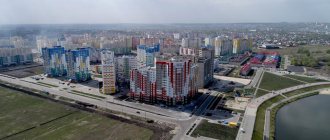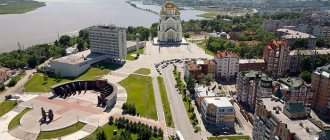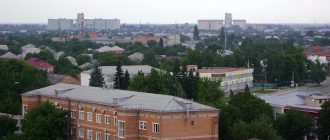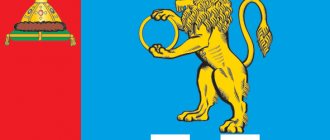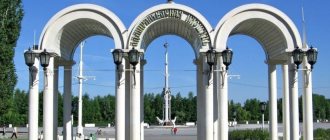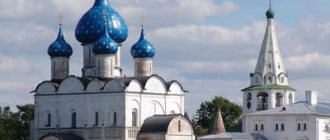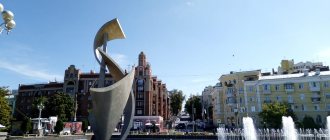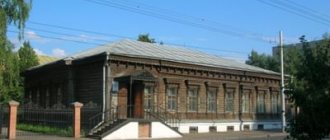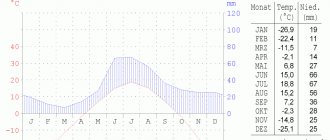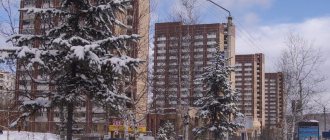Project on the theme “My hometown is Samara” for 2nd grade
Goal of the project: As part of studying the subject “The World Around You,” talk about your hometown, its attractions and memorable places.
Find information about his story and share it with your classmates. Tell schoolchildren about Samara and why I love her. Prepare a report and presentation in the form of a photo story. Project plan:
- Location on the country map.
- History and symbols.
- Samara in the present.
- Attractions.
- Places of military glory.
- Conclusion.
- An example of a finished photo story-presentation.
Fight to the bitter end
Today it is easy to talk about what happened in our city until the Decree of the Presidium of the Supreme Soviet of the RSFSR was adopted to rename Kuibyshev to Samara and the Kuibyshev region to Samara. But Alexander Zavalny recalls:
— In the winter of 1987, a meeting was held in the city department of culture. And here’s the last question: “Our department began to receive letters from residents asking us to consider a proposal to return the city to its previous name.” An ironic smile ran across the faces of those present. “How dare they! - burst out from one respectable lady. - What are they aiming for? To the sacred name of Valerian Vladimirovich Kuibyshev for every resident of our city!” And one of the party veterans even tried to engage in hand-to-hand combat with the speaker. The heated Zavalny summed up: two or three years will pass, and you will remember this conversation already in Samara.
All participants in the events speak warmly of the young engineer Anatoly Petrov, who was involved in organizing pickets and collecting signatures for appeals to the Supreme Council. He also helped transport bags of “people's will” to Moscow. Petrov's energetic actions had a great influence at the decisive meeting of the regional council, when a fierce discussion unfolded. According to Kabytov’s recollections, the rector of the state university, Lenar Khramkov, took part in it. But even his call to return the city to its historical name did not have the desired effect. The director of the art museum, the fearless Anetta Bass, took the floor without waiting in line. However, the noise and disorder in the hall continued. And then Anatoly Petrov rose to the podium. He tapped the microphone and said: “Comrades, I think it’s time to return the historical name of Samara to our city. Please vote." These simple words decided the outcome of the matter.
Report to the project
My hometown is Samara. It is located in the center of the European part of Russia, in the middle Volga region.
History and symbols
The flag of Samara is three-colored, with a red stripe at the top, then white and blue. In the center is the coat of arms. It's two-tone. There is a white goat on a blue field, with a green stripe below.
The city was founded in 1586 by decree of Tsar Fyodor Ioannovich, and for a long time it was a stronghold. Then it became the center of the province, and industry and trade began to develop there.
In Soviet times, it was a major industrial center of the Volga region.
Modern Samara
Now it is a beautiful and comfortable city, playing an important role in the region. Large mechanical engineering enterprises are located here. This is the most important transport hub. We have an international airport, and a railway line passes through Samara, connecting the European and Asian parts of the country.
Samara is also a cultural and scientific center. We have more than forty higher educational institutions and institutes. There are many museums, theaters, concert halls, and a zoological park.
Attractions
One of the main attractions is the Volga embankment. It offers a view of the great Russian river; townspeople love to stroll here.
The best way to feel the atmosphere of the city is on Leningradskaya Street, where there are always a lot of people and interesting architectural monuments, such as the house of the merchant Golovin.
We have many beautiful churches and cathedrals. And the railway station is one of the largest and most beautiful in the country.
Memorable places of military glory
In Samara, the memory of the heroes of the Great Patriotic War is sacredly honored. In those terrible years, Stalin’s underground bunker was located here, now turned into a museum.
On the Square of Glory there is a majestic monument, next to which there is a sculpture of the Sorrowful Mother. On holidays, wreaths are laid at the Eternal Flame at the foot of the monument.
In the Metallurgists Park there is a monument “Soldier of Victory”, dedicated to the heroes of the Great Patriotic War.
Conclusion: why I love my city Samara
My city is one of the best in the world, and I love it very much. I love its streets and avenues, its parks and squares, the best monuments in the world. I love its architecture and its people.
I wish my city to become even better, more beautiful and cleaner. So that only kind and good people live in it.
Fell asleep in Kuibyshev, woke up in Samara
And yet, deep down in his soul, Titov himself was not an opponent of innovation. During his student years, he often went to sports competitions in other cities and there he heard that everyone called our fellow countrymen Samarans. The decisive role, according to Titov, was played by the support of the Kuibyshev Regional Executive Committee, which was headed by Viktor Tarkhov. In the end, it was possible to achieve that both the city and the region were renamed at the same time. The residents of Yekaterinburg, for example, did not succeed. According to the first deputy head of Samara, Vladimir Vasilenko, it was at that moment that he was on a business trip in the capital of the Urals. I arrived in Sverdlovsk, and was already leaving Yekaterinburg. At that time, Vladimir Vasilenko was a deputy of the Kuibyshev City Council. According to him, residents of the regional capital split into two camps, between which there was a serious struggle. And although two-thirds of people in everyday life called themselves Samara residents, many understood that old Samara could not have achieved such a level of development if it had not become a reserve capital in Soviet times under Kuibyshev. The discussion in the City Council was very heated, as it included many representatives of industry, the aviation and space industries. And yet, out of 214 people, 114 deputies voted “for”. Vasilenko believes that this can be called a victory for true democracy. And subsequently, not a single one of his voters, who fell asleep in Kuibyshev and woke up in Samara, reproached him for supporting the initiative of local historians.
Samara. What Wikipedia doesn't know about.
The names of rivers and cities are closely related to the languages of the peoples who have long lived in the area. In our case, these people are Mordovian-Erzya. And this is a rare case when historians do not argue on this issue. Where to go? Almost in the center of the modern city there is a unique archaeological monument - the medieval Mordovian burial ground on Barboshina Polyana. Here, at the beginning of the 20th century, during the construction of the merchant Sokolov’s dacha, artifacts were discovered that were attributed to the culture of the Volga Finns. And in 1935, large-scale archaeological excavations took place in the area of Barboshina Polyana under the leadership of the Leningrad scientist Boris Latynin. It turned out that Barboshina Glade was once home to a huge medieval necropolis.
Barboshinsky burial ground. Excavation I. Burial II
It was possible to find out not only the approximate number of those buried, but also their nationality. According to the most conservative estimates, more than 5 thousand Erzyans were buried in this graveyard in the 14th century. 5000! For the Middle Ages, this figure is simply huge! And this is not the only such necropolis on the territory of modern Samara and the Samara region. At the beginning of the twentieth century the following were discovered:
....extensive but little-known cemeteries along the Samarka River (near the city of Samara), on the Laska Panda (Vlasova Gora) and Vergez Panda (Wolf Mountain) tracts, among Mordovian settlements. Among the finds in this area are remarkable unique iron daggers and swords.
Therefore, if there are mass graves and places of worship, then there must be a populated area somewhere. In our case - Samara. And it would be logical to look for the origin and meaning of the name of the city of Samara in the “Fino-Ugric Sanskrit” - the Erzyan language.
Soviet linguist Boris Serebrennikov noted in one of his works that the word “Samar” contains a characteristic ending “mar”, which means “hill” in Erzyan. But for some reason the scientist did not take the next step in deciphering the word. But everything is simple. The first part of the word “Samar”, “sa”, is a modified word “sowing”, that is, goat. And in ancient maps it is directly indicated that the settlement of Samar stands on the “white goat” river. It turns out that Samara is a “city on a goat hill.”
Samara - Samara - Seya mar - “goat hill” - “city on a goat hill”
What kind of goat gave the name to the city is now difficult to understand. Perhaps the goat is a totemic symbol of some Erzya clan, or maybe, indeed, huge herds of artiodactyls once roamed the Volga hill. Who knows? In any case, until recently, old-timers remembered that the fortress was built either on a sheep hill or on a goat hill, and one of the public gardens in the Khlebnaya Square area (the territory of ancient Samara) was called the goat one.
And here's another thing.
As you know, both the city of Samara and the region have a goat on their coat of arms. But when the Samara province was created, the Minister of Internal Affairs of the Russian Empire, Lev Perovsky, proposed that the Senate depict on the coat of arms a cornucopia pouring out gold coins - a symbol of wealth acquired from trade. The cornucopia is a kind of “hello” from the mythical goat Amolthea, who fed Zeus with her milk on Goat Hill, and the word “goat” is translated from Erzya as “wealth.”
And despite the fact that the emperor rejected Perovsky’s project, this did not affect the essence of the city in any way. Just as Samara was a city of merchants, it remains so.
Exactly 30 years ago Samara regained its historical name
For our region, 2021 is a year of significant anniversaries. On January 13, we celebrated the 170th anniversary of the birth of the Samara province. Which, however, for almost a third of its life bore a different name - Kuibyshev region. But exactly 30 years ago - January 25, 1991 - Samara regained its historical name.
Samara became Kuibyshev on January 27, 1935. A few days earlier, V.V. died. Kuibyshev. A prominent Bolshevik and statesman, an associate of Stalin. He is known, in particular, for the fact that in 1917 he proclaimed Soviet power in Samara. After his death, it was decided to give the city his name. The newspapers wrote that this was done, allegedly, at the request of the workers. However, historians do not confirm the existence of such a mass petition.
We must give this name its due. Kuibyshev was identified as the “reserve capital” during the war. It was Kuibyshev who became an industrial giant. Giant construction projects began in the Kuibyshev region: hydroelectric power stations, Tolyatti, petrochemical colossi. And it was Kuibyshev engineers and specialists who made an invaluable contribution to the preparation of the first manned space flight, which turns 60 this year. And yet, most people living on the bend of the Volga always remembered the original name of the central city.
In the late 80s, a public organizing committee was created in Kuibyshev, which set as its goal the return of the city’s historical name. Its members studied public opinion, collected signatures for renaming, and negotiated with the authorities. One of the main initiators of the process was the historian Pyotr Kabytov, who gave an interview to the Samara State Television and Radio Broadcasting Company on the eve of the anniversary of the renaming. There was no complete unity on this issue in Kuibyshev, admits Professor Kabytov.
“Who were the opponents? The opponents were those who believed that this idea did not achieve anything. There is no sausage, vodka on coupons, if the name is returned, then new atlases, new maps need to be created, stamps must be made, this is expensive. On the other hand, those who spoke for Samara, they believed that a return to the historical name is an act of justice; it is necessary to return what was taken away by the authorities. But I wanted to say one more thing: if in the 70s you went to Moscow, Kazan or some other city, many people said that they were not from Kuibyshev, but from Samara. That is, the name of Samara was holy,” says Doctor of Historical Sciences Pyotr Kabytov.
At first, opposition from city and regional authorities was felt, the historian recalls. However, gradually it was possible to convince both the city and regional councils of deputies. As a result, they supported the renaming, sensing public sentiment. The central government had the final say. And on January 25, 1991, Kuibyshev again became Samara after 56 years of living under a “pseudonym”.
“For the central government, the most convincing argument was our appeals and 80 thousand signatures of citizens, which we collected and delivered to Moscow. When the central government saw that they took this issue very seriously. they reported to Boris Nikolaevich, and Yeltsin signed,” says Pyotr Kabytov.
Jokingly, the historian also makes a funny gender argument.
“If we stand on the bank along the Volga, then on one side there are female cities, on the other there are male cities. So, for 56 years a woman was a man,” Professor Kabytov sneers.
Another interesting point. Three days before Kuibyshev was renamed, the team from the “Vzglyad” program arrived in the city. This was one of the last broadcasts before the program was closed. When designing the studio, a proposal was made to use the name Samara as the name of the city, although the broadcast was officially still from Kuibyshev. Many believe that this fact had an important impact on the people making the decision.
One of the active members of the committee, Alexander Zavalny, told the Samara State Television and Radio Broadcasting Company about such a funny incident.
In 1990, when we were still campaigning on the streets, a Frenchman approached us. He didn’t know Russian, but he read and translated the word “Samara” on our poster. And he says: “My grandfather lived in Samara, and he told me that it was such a beautiful city! Someday I dream of visiting Samara! “So you’re already in Samara,” they tell him. He looked: “Don’t deceive me, I came to Kuibyshev!”
And one more anecdotal story. Soon after the city on the Volga acquired its historical name, geographical maps began to appear in the country, where “Samara” was listed instead of Kuibyshev, and the inscription “Novosamarsk” suddenly appeared above the “Novokuibyshevsk” point!
Today, 3 decades later, the metropolis is still associated with the name of the revolutionary. The main square, street and even an entire district are named in honor of Valerian Vladimirovich. As if to preserve historical justice. More than half a century of a “temporary” name still cannot be erased.
Photo: Guide Volga, Kama, Oka, Don, M., 1955
Samara - Samara - Seya mar - “goat hill” - “city on a goat hill”
What kind of goat gave the name to the city is now difficult to understand. Perhaps the goat is a totemic symbol of some Erzya clan, or maybe, indeed, huge herds of artiodactyls once roamed the Volga hill. Who knows? In any case, until recently, old-timers remembered that the fortress was built either on a sheep hill or on a goat hill, and one of the public gardens in the Khlebnaya Square area (the territory of ancient Samara) was called the goat one.
And here's another thing .
As you know, both the city of Samara and the region have a goat on their coat of arms. But when the Samara province was created, the Minister of Internal Affairs of the Russian Empire, Lev Perovsky, proposed that the Senate depict on the coat of arms a cornucopia pouring out gold coins - a symbol of wealth acquired from trade. The cornucopia is a kind of “hello” from the mythical goat Amolthea, who fed Zeus with her milk on Goat Hill, and the word “goat” is translated from Erzya as “wealth.”
And despite the fact that the emperor rejected Perovsky’s project, this did not affect the essence of the city in any way. Just as Samara was a city of merchants, it remains so.
Samara city and cartography
As soon as the conversation turns to “Dozasekinsky” Samara, researchers mention two artifacts: the portolans of the merchants Pizzigano and the cosmographer Fra Mauro. On these maps, very, very approximate, a certain settlement of Samar is marked. It is curious that the river near the settlement of Samar on Portolan Fra Mauro is not called Samara, but is written as Chaisu bianco. To be precise - flumen Chaisu bianco. Researchers try to “ignore” the last word “bianco”, concentrating their efforts on translating the mysterious word Chaisu, believing that this is what the Samara River was previously called. The famous Samara local historian Guryanov in his book “Ancient Milestones of Samara” suggested that Chaisu is a modified phrase Koi Su, which translated from the Kyrgyz language means “sheep water.”
Historians, realizing the absurdity of the “sheep” name, use the adjective “muddy” instead of “sheep”, without explaining the meaning of the hydronym. Meanwhile, everything is much simpler, and there is no muddy water, let alone sheep water. And there is a Russian word “goats” or “goat” that was not understood by Francis the Moor (Fra-Mauro - an abbreviation of his name and nickname). There is information that Francis the Moor met with representatives of the Russian embassy, from whom he obtained geographical data. Someone, apparently, told about a river flowing into the great Volga, which is associated with the “white goat”. Fra Mauro wrote it down on the map - fl. Chaisu bianco - "white goat river". It turns out that in the 15th century the settlement of Samar stood on the banks of a river with quite a goat name? It remains to find out what kind of people lived in the city of Samar.
